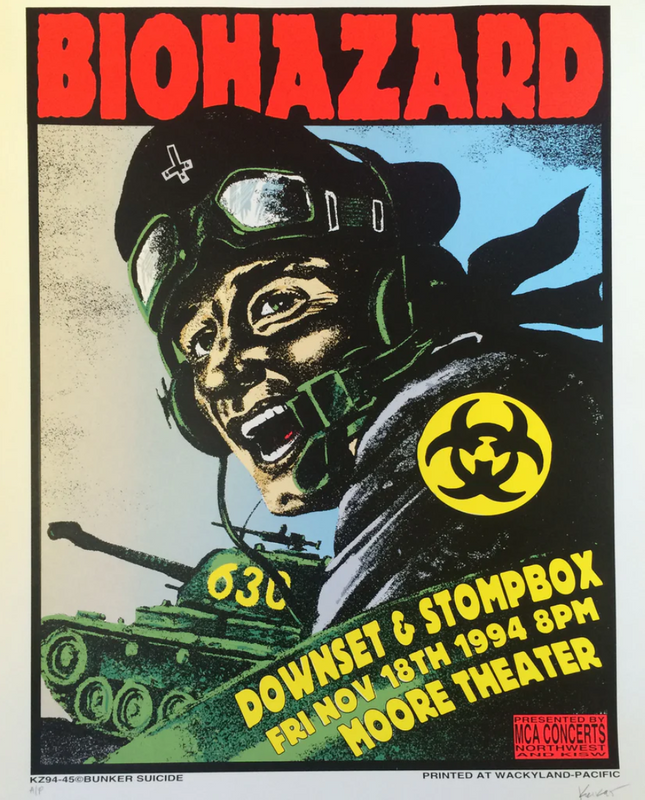Weaponry in the Crosshairs of Street Pop Art and Graffiti
The presence of weapons in street pop art and graffiti carries a hefty load of symbolism and controversy. The very image of a weapon – be it a gun, a knife, or any implement associated with violence – is fraught with socio-political connotations that street artists often leverage to provoke, comment, and sometimes shock their audience. These artists have taken the powerful imagery of weapons and infused it with layers of meaning, transforming them from mere objects of destruction into potent symbols of critique and reflection. Weapons have been a common motif in both graffiti art and pop art. In both graffiti art and pop art, using weapons can be a powerful way to convey a message and provoke a reaction from the viewer. However, it's important to note that the use of violent imagery can also be controversial and can raise questions about the role of art in society. Graffiti artists often use guns, knives, and grenades to convey a sense of danger or rebellion. For example, a spray-painted image of a weapon might be used to represent the power or aggression of a particular person or group. Some graffiti artists have also used weapons to convey a political message. For instance, a mural featuring an AK-47 rifle might be used to criticize the proliferation of guns in society or to express solidarity with a particular political cause. In some cases, graffiti artists have used weapons as a form of commentary on the violence and conflict in the world. For example, a mural featuring a grenade might be used to critique the destructive nature of war or to advocate for peace. Pop artists have also incorporated weapons into their artwork. For instance, Andy Warhol's "Gun" series features images of various firearms, including revolvers and pistols. Roy Lichtenstein's painting "Whaam!" depicts a fighter jet firing a missile, emphasizing the violence and chaos of war. Some pop artists have used weapons to satirize consumer culture or to comment on the commodification of violence. For example, Claes Oldenburg's "Giant BLT (Bacon, Lettuce, and Tomato Sandwich)" features a knife skewering a sandwich, highlighting the absurdity of weaponizing everyday objects.
The Symbolic Arsenal of Street Art
Street artists have long employed the iconography of weapons to convey messages about power, conflict, and resistance. In their hands, weapons become a visual shorthand for a range of issues – from war and peace to crime and justice. Sometimes, the gun is depicted with stark realism, forcing those who encounter the piece to confront the realities of violence head-on. Other times, the weapon is abstracted or juxtaposed with unpredictable elements to create a sense of irony or to challenge the viewer's preconceptions. The use of firearms in graffiti art can directly reflect the artist's environment, where violence may be a daily reality. In cities plagued by crime and unrest, the appearance of weapon imagery in street art can mirror the community's experiences, a raw expression of the turmoil that residents may face. Conversely, in more peaceful or politically stable contexts, weapons in street art can serve as a jarring reminder of global conflicts, a call to action, or a protest against militarism and warfare.
Artists and the Weapon Motif
Some street artists have become particularly associated with the weapon motif, using it as a central theme to explore and challenge societal norms. These artists wield the weapon imagery with intention, repurposing it to critique the issues of aggression and oppression that such objects typically symbolize. The weapon becomes a tool not for violence but for its opposite – a plea for peace, a commentary on the human cost of conflict, or an ironic take on the glamorization of violence in media and culture. The weapon motif in street pop art and graffiti also confronts the viewer with questions about the role of force in justice and the dichotomy between societal order and personal liberty. Through these works, artists can spark discussions on topics that are often uncomfortable but necessary, such as gun control, police brutality, and the arms race. The art acts as a catalyst for dialogue and, at times, as a means to inspire change. The depiction of weapons in street pop art and graffiti transcends the mere representation of violence. These images serve as a vehicle for artists to engage with their audience on complex issues, question, condemn, and inspire. The weapon, with its inherent power and danger, becomes a paradoxical symbol of hope and transformation in the hands of street artists. As long as there are discussions to be had about power, conflict, and violence, weapons will undoubtedly continue to be a compelling and provocative element in the vocabulary of street pop art and graffiti.




